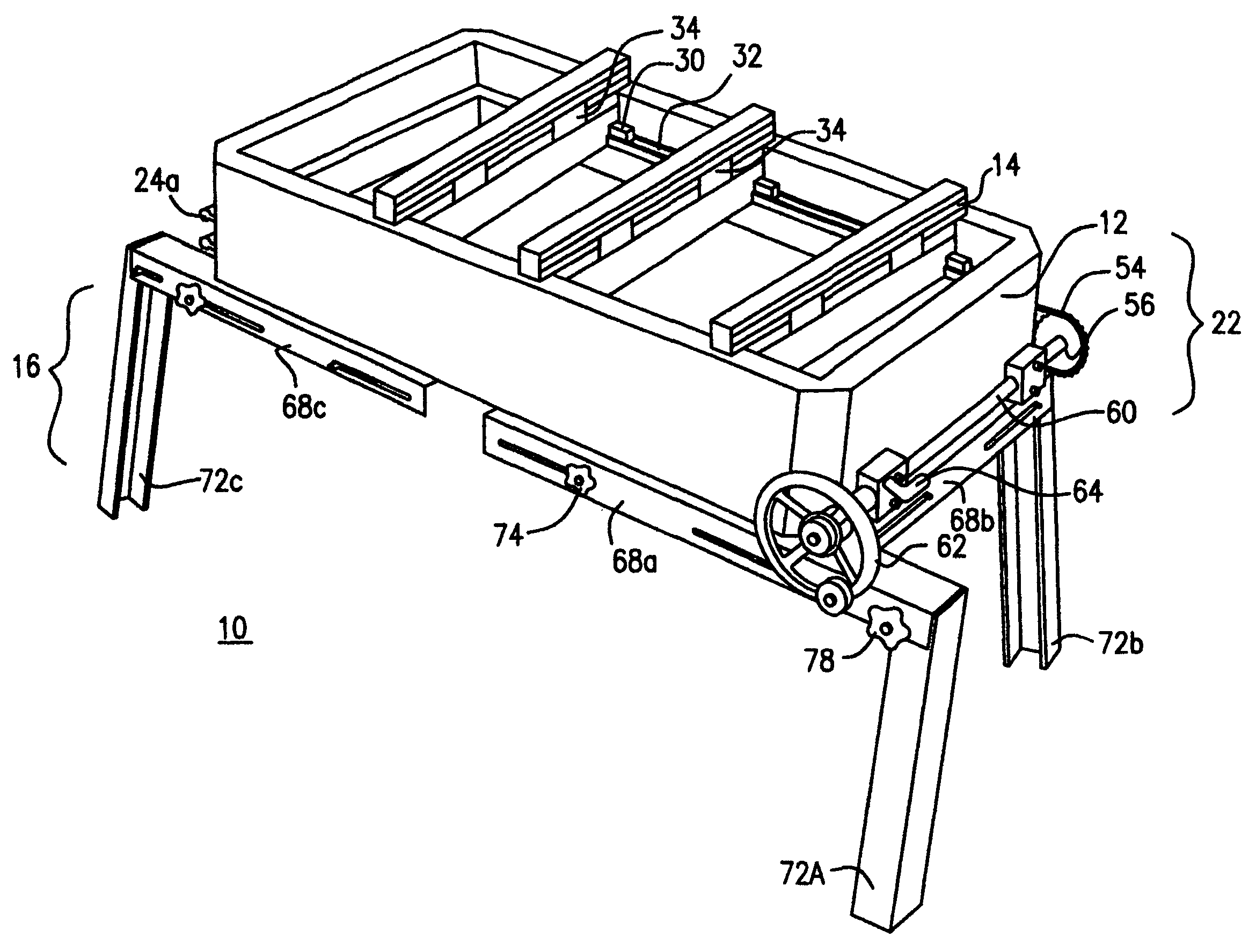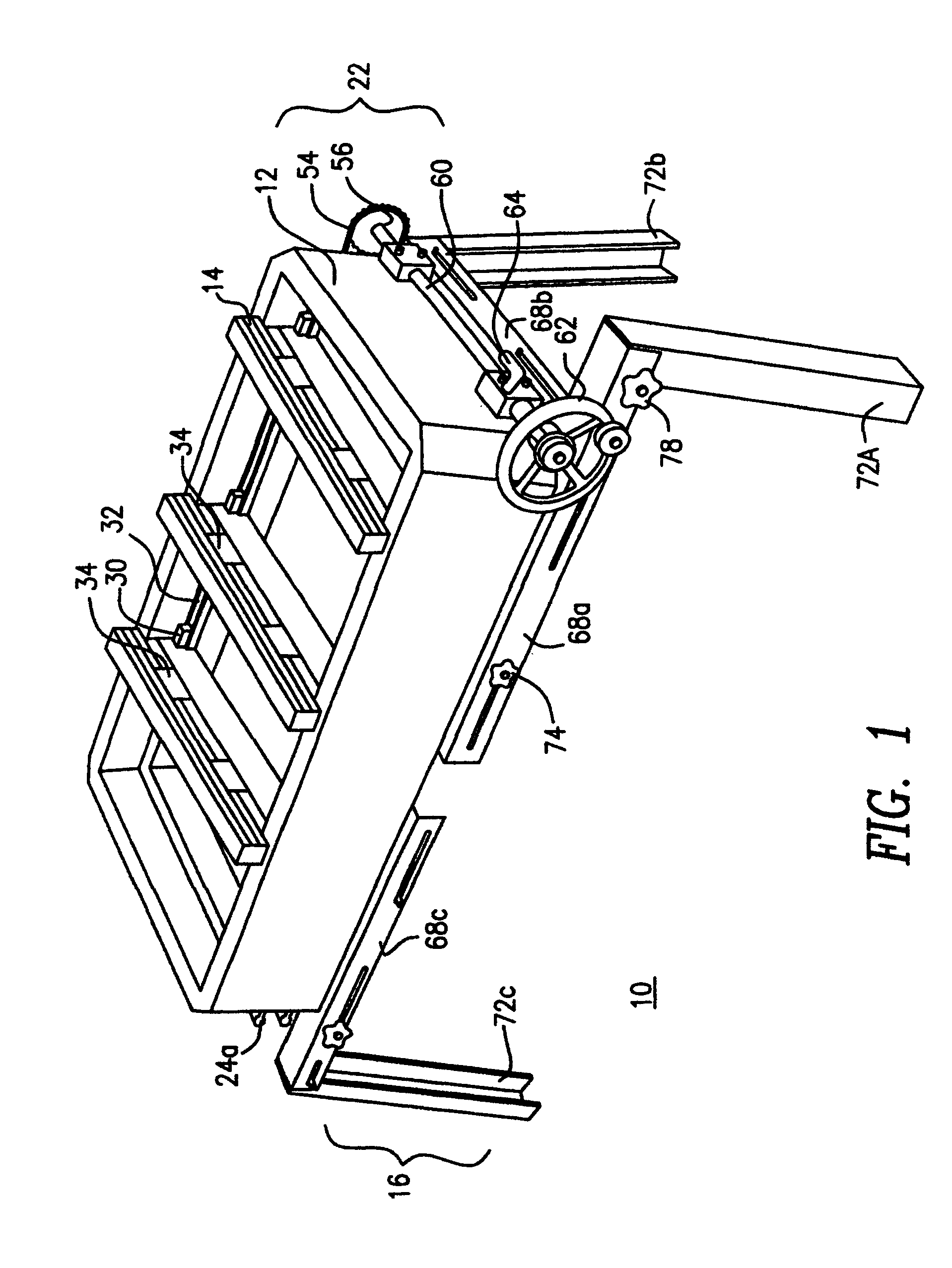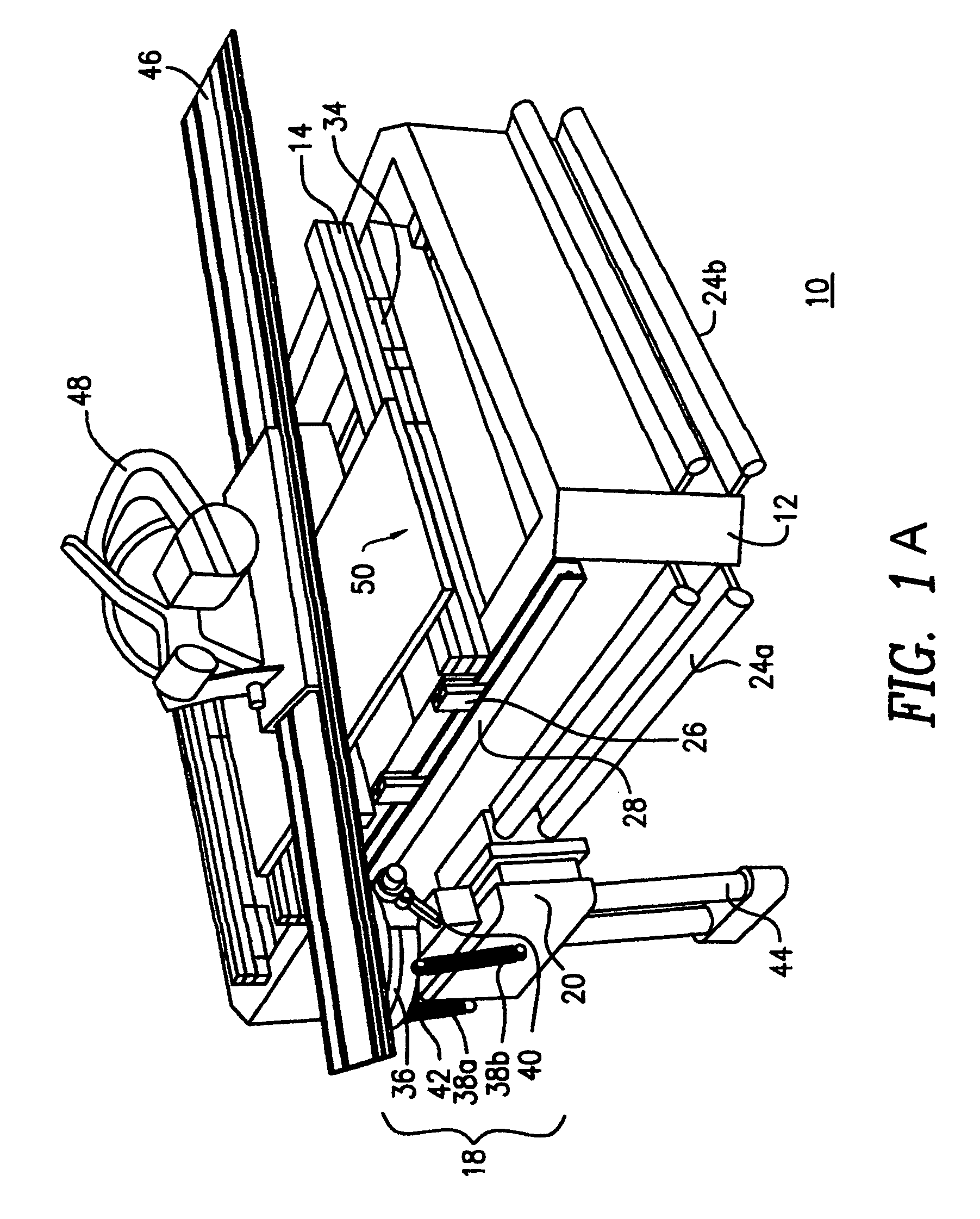Extendable woodworking system
- Summary
- Abstract
- Description
- Claims
- Application Information
AI Technical Summary
Benefits of technology
Problems solved by technology
Method used
Image
Examples
Embodiment Construction
[0039]During the course of this description like numbers will be used to identify like elements according to the different views which illustrate the invention.
[0040]Referring to the preferred embodiment 10 as illustrated in FIGS. 1–2, shown is a perspective view of an exemplary embodiment of the present invention, an expandable tool table 10 for use with hand held electrical power tools (e.g., such as circular saws, routers, planers, belt sanders, reciprocating saws, and other hand held power tools as well) for cutting and processing all types of materials. Clearly depicted in FIG. 1, a base assembly 12 supports an adjustable tabletop assembly 14 while being supported by a plurality of leg assemblies 16. Referring to FIG. 1a, a guide control unit 18 is hingedly affixed to a trolley assembly 20 which is slidably positionable via a gear assembly 22 as shown in FIG. 1. The trolley assembly 20 rides on a plurality of rails 24a and 24b which are affixed to the sides of the base assembly...
PUM
| Property | Measurement | Unit |
|---|---|---|
| Power | aaaaa | aaaaa |
| Circumference | aaaaa | aaaaa |
| Mobility | aaaaa | aaaaa |
Abstract
Description
Claims
Application Information
 Login to View More
Login to View More - R&D
- Intellectual Property
- Life Sciences
- Materials
- Tech Scout
- Unparalleled Data Quality
- Higher Quality Content
- 60% Fewer Hallucinations
Browse by: Latest US Patents, China's latest patents, Technical Efficacy Thesaurus, Application Domain, Technology Topic, Popular Technical Reports.
© 2025 PatSnap. All rights reserved.Legal|Privacy policy|Modern Slavery Act Transparency Statement|Sitemap|About US| Contact US: help@patsnap.com



